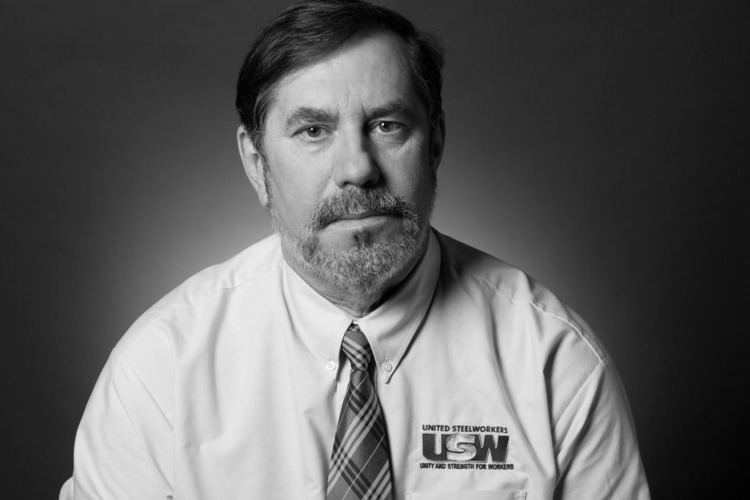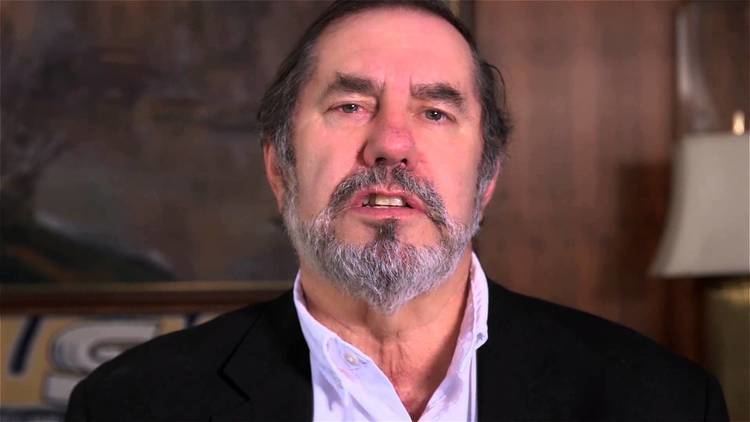Name Leo Gerard Parents Wilfred Gerard | Spouse Susan Gerard Role Steelworker | |
 | ||
Occupation Labor leaderSteelworker Children Kari-Ann Gerard, Meaghan Gerard People also search for Susan Gerard, Kari-Ann Gerard, Meaghan Gerard, Eric Avery, Leonardo DiCaprio | ||
Nces 5 0 united steelworkers president leo gerard
Leo W. Gerard (born 1947) is a steelworker and a Canadian and American labour leader. He was elected president of the United Steelworkers (USW) in 2001, and is the second Canadian to head the union. He is also a vice president of the AFL-CIO.
Contents
- Nces 5 0 united steelworkers president leo gerard
- i am rising leo gerard united steelworkers
- Early life and career
- USW presidency
- Other roles
- In popular culture
- References
i am rising leo gerard united steelworkers
Early life and career

Gerard was born in 1947 in Creighton Mine, Ontario, at the time an unincorporated suburb of Sudbury. His father, Wilfred Gerard, was a miner at the Creighton Mine and a key organizer with the International Mine Mill and Smelter Workers' Union (which merged with the United Steelworkers in 1967). He grew up in Sudbury. Taught that unions were supposed to be engaged on social issues and not just collective bargaining, Gerard often listened in on union meetings conducted in the family home. He handed out leaflets on the eve of a strike at the age of 11, and accompanied his father on a union organizing drive at the age of 13.

After graduating from Lively District Secondary School, Gerard took a job at the Inco nickel smelter in Sudbury, unclogging tuyeres with a sledgehammer. He was elected steward and then chief steward of the 7,000-member Local 6500. He enrolled at Laurentian University, studying economics and planning to be an economics professor. He quit college in 1977 when he was just a few credits short of graduation, and took a job as a staff representative for the international union.
He married his high school sweetheart, Susan, and they have two daughters.
Gerard rose steadily within the Steelworkers union hierarchy over the next two decades. He was elected director of USW District 6 in 1985 and re-elected in 1989, and was appointed national director of the Canadian division of the USW in August 1991. He was elected secretary-treasurer of the international union in 1993, and again in 1997. While USW secretary-treasurer, Gerard instituted a number of important administrative initiatives. He implemented cost-saving and revenue-generating initiatives, reorganized the secretary-treasurer's office, created an information technology department, developed a new union-to-member communications network, restructured member and local union servicing, and reinvigorated the union's organizing efforts.
Gerard eventually returned to Laurentian University and received a bachelor's degree in economics and politics. The university awarded him an honorary Doctor of Laws degree in 1994.
USW presidency
Concerned that his age hindered the USW's ability to deal effectively with the problems confronting workers, President George Becker resigned effective February 28, 2001, seven months before his term of office was to end. The Steelworkers' executive council appointed Gerard his successor on February 21. Gerard quickly assembled a slate of supporters (many of them incumbent officers in the international union), and announced he would run for the presidency in the union's regularly scheduled elections in November 2001. He was elected without opposition to four-year terms in 2001, 2005 and 2009. Gerard was the second Canadian to head the United Steelworkers, after Lynn R. Williams (1983-1994).
In his first two terms in office, Gerard oversaw in a significant number of union mergers with the USW. The USW merged with the 12,000-member American Flint Glass Workers Union in 2003, the 50,000-member Industrial, Wood and Allied Workers of Canada in 2004, 3,000 former members of the Brotherhood of Maintenance of Way Employees in Canada in 2004, and the 1,150-member Independent Steelworkers Union in 2007. But the most important merger was in 2005 with the 250,000-member Paper, Allied-Industrial, Chemical and Energy Workers International Union (PACE), a merger which made the USW the largest industrial union in North America.
Gerard has adopted a global perspective on unionization. Beginning in 2003, he has signed strategical alliances pledging mutual support on workers' rights, organizing, and collective bargaining with the World Aluminum Conference of the International Metalworkers' Federation, Australian Workers' Union, Construction, Forestry, Mining and Energy Union of Australia, Alliance of Canadian Cinema, Television and Radio Artists, National Union of Mine and Metal Workers of the Mexican Republic, Confederação Nacional dos Metalúrgicos of Brazil, and the Canadian Region of the Communications Workers of America. In 2005, Gerard negotiated a strategic alliance with the million-member Amicus, the United Kingdom's second-largest trade union and the largest private sector union. Two years later, this strategic alliance led to a merger between the USW and Amicus' successor, the 1.8 million-member Unite. The two unions adopted a new name, Workers Uniting, although both unions will retain their individual identities for at least a few years.
He returned to Sudbury for a visit in 2008 after an arson incident burned down the historic Sudbury Steelworkers Hall, where he had gotten his start as an organizer with Local 6500, and told the city's media that seeing the burned building was one of the most traumatic events of his life. Steel's head office subsequently donated $10,000 to the city's police force as a reward for any information that led to an arrest.
Gerard suffered a blood clot (thrombus) in his heart in February 2008, and successfully underwent heart surgery to remove the blockage.
Other roles
In 2002, he chaired the Second World Rubber Industries Conference in São Paulo, Brazil and served as chair of the Rubber Sector of the International Federation of Chemical, Energy, Mine and General Workers' Unions (ICEM). A member of the executive committee of the International Metalworkers' Federation, he co-chaired the federation's World Aluminum Conference in 2003.
Gerard is a member of the Labor Advisory Committee to the United States Trade Representative and the Secretary of Labor and the National Commission on Energy Policy. He is also a member of the Advisory Committee on Trade Policy and Negotiations (ACTPN).
Gerard was elected a vice president of the AFL-CIO in 2001, elected to the AFL-CIO Executive Council in 2001, and appointed to serve on the labor federation's Executive Committee in February 2003. He was instrumental in the formation of the AFL-CIO Industrial Union Council, and was named chair of the AFL-CIO's Public Policy Committee in March 2005.
He also is a member of the Apollo Alliance, a group which works toward North American energy independence and cleaner and more efficient energy alternatives, and is co-chair of the board of directors of the Blue Green Alliance
In popular culture
News footage of Gerard is included in the 2008 documentary, Battle in Seattle by Stuart Townsend. Gerard and USW vice president Tom Conway are seen dragging two large concrete planters into an intersection near the Washington State Convention and Trade Center during the 1999 WTO protests in an attempt to help protesters block access to the WTO meetings. Gerard and Conway came under fire by Seattle police during the incident.
